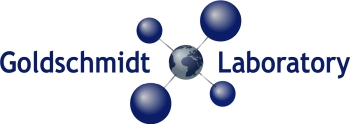About the project
The goal for The Goldschmidt Laboratory I infrastructure project is to establish the high-level geochemical research infrastructure required to keep the University of Oslo and Norway at the international forefront of solid Earth geosciences. This will also involve improved local and national coordination of geochemistry-based basic and applied research, through a collaboration between the Department of Geoscience at the University of Oslo, the Norwegian Geological Survey (NGU), and other Norwegian partners and collaborators.
Visit The Goldschmidt Laboratory webpages
Objectives
'The Goldschmidt Laboratory I' infrastructure is central in the strategic plans of the involved partners in the project and will provide data that are essential for both research projects and geological mapping involving a wide range of geoscience disciplines. R&D challenges include:
- Calibration of the geologic time scale, testing correlations and causal relations between magmatic events, climate change and mass extinctions
- Constraining the time scales of rapid (<100 ka) tectonic, magmatic, metamorphic and ore-forming processes as well as the dynamic coupling between such processes
- Studies of natural carbon release and sequestration processes.
On the applied side, the mapping and mineral resource assessment mandates of the Norwegian Geological Survey require acquisition of high-quality geochronological, isotopic, and mineralogical data to characterize the formation of crustal sections, tectonic evolution of orogens, the stratigraphic correlations between lithological units, the genesis of ore deposits, and the formation of industrial mineral deposits.
Background
'The Goldschmidt Laboratory I'-project comprise an upgrading of three well established research laboratories in Earth Sciences, namely the ID-TIMS and the SEM laboratories at Dept of Geosciences and the Ar-Ar geochronology laboratory at NGU.
The infrastructure cluster comprise these three laboratories:
- Thermal ionization mass spectrometry (ID-TIMS), UiO, Oslo
- Scanning Electron Microscope (SEM), UiO, Oslo
- Noble gas mass spectrometer (NGMS), NGU, Trondheim
Financing
The full name of this project is 'The Goldschmidt Laboratory I Infrastructure for Geochronological Characterization of Solid Earth Materials'. The project is funded from the Norwegian Research Council (NFR), financed through the FORINFRA-Nasj.sats.forskn.infrastruktur-programme, with the NFR-project number 295894.
'The Goldschmidt Laboratory I' infrastructure project started up in 2021 and will end in 2029.
Cooperation
'The Goldschmidt Laboratory I' project is lead by Professor Luca Menegon, Department of Geosciences, University of Oslo.
The laboratory I is a national infrastructure for geochronological characterization of solid earth materials, and is a cooperation between Department of Geosciences, University of Oslo and The Geological Survey of Norway (NGU).

